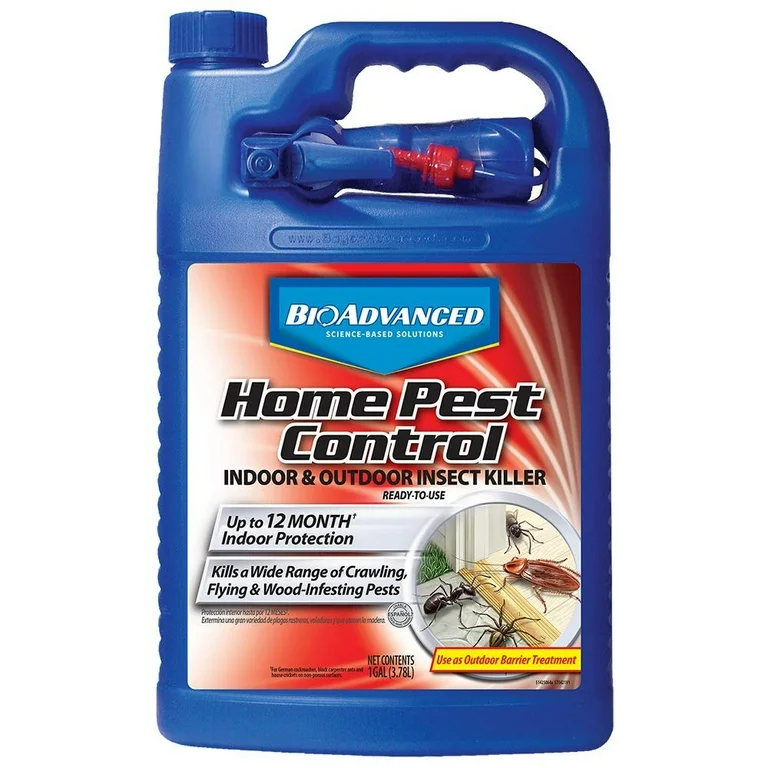A1 Bed Bug Exterminator Charlotte - Reliable and Budget Friendly Services
A1 Bed Bug Exterminator Charlotte - Reliable and Budget Friendly Services
Blog Article
Bed Pest Therapy Failure: Comparing Chemical Vs. Non-Chemical Solutions
In the realm of bug control, specifically when handling the consistent concern of bed pests, the choice between chemical and non-chemical treatment options can be a crucial one. Both approaches use distinct advantages and downsides, affecting elements such as efficiency, safety factors to consider, and overall price. By analyzing the nuanced details of each method, a more clear understanding of which path to go after in addressing a bed bug invasion can be obtained.
Effectiveness of Chemical Treatments
Chemical therapies for bed pest invasions have actually been extensively recognized for their powerful and rapid efficiency in eradicating these bugs. When thinking about the effectiveness of chemical treatments, it is crucial to comprehend that they can supply a quick and complete option to a bed insect issue. Specialist pest control operators usually count on pesticides to target bed pests at various stages of their life cycle, consisting of grownups, eggs, and nymphs. These chemicals commonly function by disrupting the bed bugs' nerve system, causing paralysis and eventual death.
Moreover, chemical treatments have the benefit of offering residual results, meaning that they can remain to eliminate bed bugs also after the first application. This residual action is particularly advantageous in combating any possible re-infestations. In addition, the fast activity of chemical therapies can bring relief to individuals facing extreme bed pest invasions, permitting them to restore control of their home rapidly.
Safety Worries With Chemical Solutions
One critical aspect that requires careful consideration when utilizing chemical solutions for bed bug treatment is making sure the safety of occupants and the setting. While chemical treatments can be reliable in getting rid of bed pests, they might position risks if not dealt with correctly. One of the primary safety interest in chemical options is the prospective injury they can create to human wellness. Exposure to particular chemicals made use of in bed bug treatments can bring about breathing issues, skin irritation, or various other unfavorable reactions, specifically in individuals with pre-existing problems or sensitivities. Additionally, inappropriate application or dosage of chemical pesticides can result in hazardous residues sticking around in the treated location, positioning long-term health and wellness risks to owners.
Additionally, the environmental impact of chemical options is another considerable factor to consider. Some chemicals used in bed pest therapies may be harmful to valuable insects, wildlife, and communities if they leach right into the dirt or water systems. It is important to make use of chemical treatments carefully, following safety and security guidelines, and taking into consideration less hazardous options to mitigate these dangers and make certain the efficient and safe administration of bed insect infestations.
Benefits of Non-Chemical Techniques
Taking into consideration the prospective safety worries and ecological effect connected with chemical remedies for bed bug treatment, checking out non-chemical methods offers an encouraging choice with numerous unique advantages. Non-chemical techniques provide a much safer choice for families, particularly those with family pets, individuals, or children sensitive to rough chemicals. These strategies get rid of the threats of direct exposure to harmful compounds, minimizing the capacity for unfavorable health results. Moreover, non-chemical treatments are environmentally pleasant, as they do not add to air or water contamination, making them a sustainable option for insect control.
In addition, non-chemical remedies can be effective in targeting bed insects, consisting of hard-to-reach locations where chemical treatments may not permeate - A1 pest control charlotte nc bed bugs. Techniques such as warmth treatment, vacuuming, steam cleaning, and mattress coverings give complete eradication without the use of hazardous chemicals.
Limitations of Non-Chemical Treatments

In addition, non-chemical treatments typically call for numerous applications to achieve effective removal. This can be lengthy and might not constantly guarantee total elimination of all bed insects and their eggs, specifically in hard-to-reach or covert places.
In addition, the success of non-chemical therapies heavily counts on appropriate application and thoroughness, which can be testing for people without expert knowledge. Insufficient application of non-chemical approaches might cause insufficient eradication, leading to consistent invasions and the requirement for extra therapies.
As a result, while non-chemical therapies have their benefits, it is important to recognize these constraints and consider them when determining the most efficient approach for handling bed pest problems.
Expense Comparison: Chemical Vs. Non-Chemical Options
Given the limitations linked with non-chemical therapies, a crucial facet to review in the context of bed pest administration is the cost contrast in between chemical and non-chemical choices. In contrast, non-chemical therapies like warm therapy or heavy steam can be much more expensive, with prices ranging from $1,000 to $6,000 for an entire home. While the first price of chemical treatments may seem lower, numerous therapies may be required to totally eradicate the invasion, possibly raising the overall cost.
Final Thought

Taking into consideration the potential security problems and environmental effect linked with chemical services for bed pest treatment, checking out non-chemical techniques offers a promising option with numerous unique benefits.Provided the restrictions linked with non-chemical treatments, an essential element to evaluate in the context of bed insect monitoring is the price comparison in between chemical and non-chemical alternatives. In comparison, non-chemical treatments like warmth therapy or vapor can be more expensive, with expenses varying from $1,000 to $6,000 for a whole home. While the first expense of chemical treatments might seem lower, numerous therapies may be needed to completely eliminate the invasion, possibly raising the total expense.In conclusion, when contrasting have a peek at these guys chemical and non-chemical bed insect therapy alternatives, it is crucial to consider effectiveness, safety, advantages, limitations, and price.
Report this page